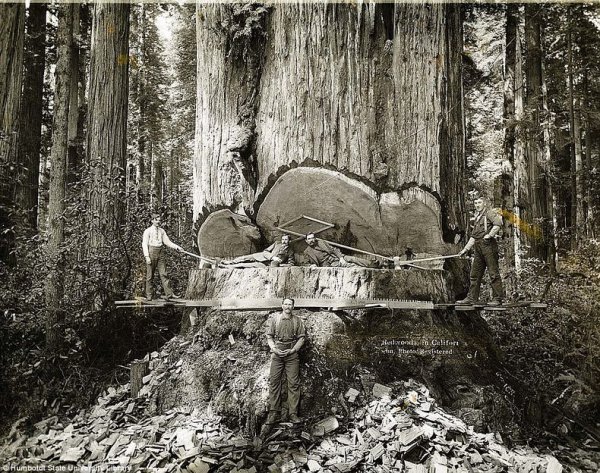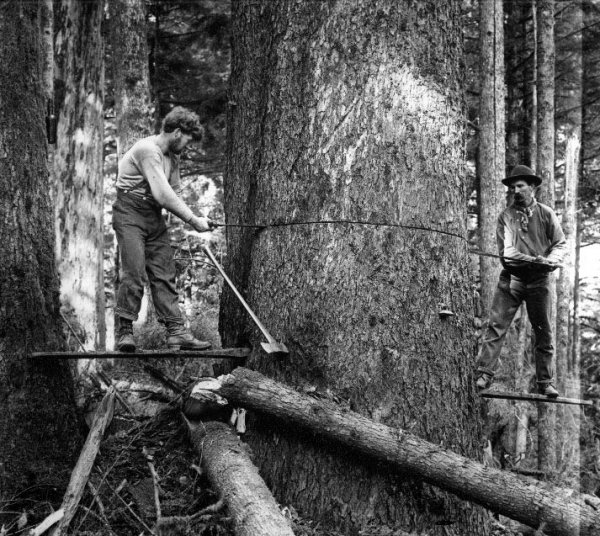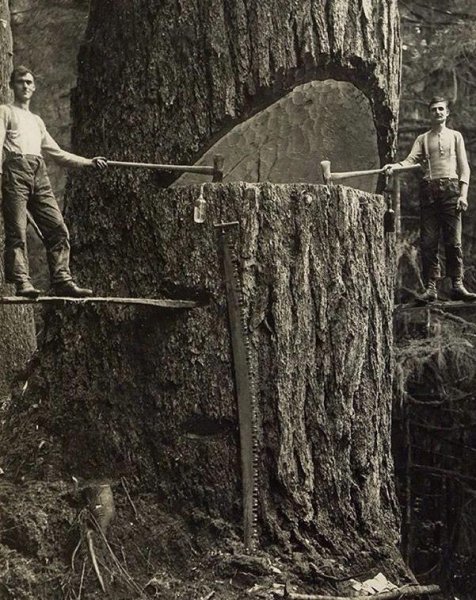This trail has been officially closed since the floods of 2013, now nearly six years in the past. I know it's a pretty obscure one, in the middle of nowhere, and probably high on maybe, optimistically, the list of 5 people to hike. And therefore, not much of a concern to the probably overstretched National Forest Service.
Heck, maybe they don't even know where it is. Here is the 2013 USFS map, showing the trail leaving jeep road 118 in a place it definitely doesn't, and going a direction it doesn't go. Compare this to the red overlay, my actual gps track of hiking this trail:
It's also not on the USGS map, nor is it on the includes-almost-everything Mapbuilder Topo layer on caltopo.
I suspect most of the trails up here are user maintained. I did email the USFS to ask permission to do this work, but didn't hear back. So, not a no, but not really a yes either. Well, in the end I'm not cutting down trees to build a trail. I'm not cutting firewood. I'm just helping out. Right?
Maybe that sounds a little callous, but here are my thoughts. I can name several local to me old trails that don't get much use or were flood damaged. Several of which are in USFS land and which they stated will not be repaired due to the expense and difficulty. Several of those reflect history-old wagon and jeep roads constructed by early settlers that went to single track as they fell out of use to four wheeled vehicles. I think it is important to preserve these trails, because they are part of this states history, and of our history.
What kind of tools to use? My first thought was a chainsaw. After all, this seems like the most logical option, able to go through anything I'd encounter here with ease. This thought ended the moment I picked one up at the local home improvement store. Those things are heavy to start with, and to think of it full of fuel and oil, plus an additional fuel container, plus all the safety gear... basically, a lot to carry. Plus potentially a lot to go wrong, and any help hours away.
So what to do? Hmm, what did people do before chainsaws, which really only came into use around 1930?




So I researched and read everything I could about crosscut saws. Over the course of that, I found Jim Talburt at jimscrosscutsaws.com, and started talking to him. He was able to provide some great advice, and I purchased a 42 inch lance tooth saw from him. You can find some other sources, but of course I like that he likes finding and reconditioning old saws, and the USFS among others seem to think vintage saws are better and perform better than modern ones.
In the meantime, I assembled some other tools, ending up with a ten inch folding saw made by Corona (would not buy this particular saw again), a Silky Katanaboy 500 20 inch folding saw, a hatchet, and some sawing wedges, which keep the cut open and the blade from binding. With these four tools, I have the capacity to cut anything I'll come across, up to around 24 inches in diameter. Fortunately, they just don't get much bigger than that here!
And the saw on top is a cheap Ebay score, largely because like Jim, I am interested in getting one of these great old tools back into working condition. I used the medallion on the handle as well as a faint etching visible on the blade to date it back to at least 1919- pretty cool that something that old is still around. Even better that it will get a second life!
And weight? The hatchet might be the heaviest item in my pack, but I weighed the largest saw as pictured at top, and got 3.5 pounds on the dot. Certainly alot lighter than a chainsaw.
On my first trip up to the area, I spent about five hours using the hatchet, Corona, and Silky saws to cut and remove as much of the smaller stuff that I could. While the Katanaboy will handle logs up into the low teens in diameter, it definitely takes some time there, and I only cut one on the first day, waiting until I got the big saw from Jim.
On my second trip, I set out with my best buddies for the Bright Extension, starting at Coulson Gulch.
Pups leading the way along road 118.
Upon arrival, the first obstacle came withing maybe 50 feet of where the trail leaves the road. These trees have been down long enough that a social trail had developed up and around (off to the right of the below photo). I'm not sure how long that has taken to develop on a not oft used trail.
Trees.
After assessment, I decided the most logical line for the trail to follow here was part of the original, and part of the social trail, as another tree had fallen on top of the trail, but running parallel to it. A few cuts through the offenders above, and this section would be good to go.
I started with the Katanaboy and hatchet to remove the smaller branches, then planned the cuts with the crosscut saw. I used the hatchet to remove as much bark as I could in the areas I planned to cut, as it has the tendency to hold dirt or rocks, which will definitely dull your blade if you hit them. I also made a small v for the saw blade to ride in, and got to work.
August, my best helper, as he often chewed on cut branches. Doing his small part!
It wasn't as fast as a chainsaw would've been, but 2-3 minutes to get through the largest log while still being able to enjoy the sounds of the forest and not be breathing exhaust fumes? Not bad.
I made the cut most of the way through the logs, aided by a wedge, and then used the Katanaboy to take care of the undercut. I found it particularly useful to get under those logs so close to the ground, as there was limited space to get under them, and it's light and easy to cut upwards with.
I moved one of the cut sections off to the left to help delineate the trail, and then removed and used the smaller branches to help create a short section of trail. All done!
It was a 10 minute hike to the next area, which must have been a victim of a high wind event at some point in the past. There's definitely enough snow up here to avalanche in the winter, but the terrain isn't steep enough.
For the sake of ease, and because the existing trail is a bit more clear, I decided to go around to the bottom, and work my way up. The first obstacle was recent fall, and still vibrantly green.
Looking up the trail.
I again used to Katanaboy to remove smaller branches so I could get to the trunk, then cut the top off and put it aside. I repeated the same at the other end, and then used the crosscut saw to power through the trunk. Since the tree was hanging, I didn't need to undercut or use a wedge this time. It went pretty quick.
Things were looking better already!
I continued up the trail, alternating between the Katanaboy for smaller stuff, and the crosscut saw for larger. Sometimes I was able to remove a piece of dead fall without cutting at all, just simply lifting and moving off the trail.
August and Gunner assisting on another tree to be cut.
For their safety and so I could keep less of an eye on them, I tied them both to a tree while I was working. I wouldn't want that log to fall on my buddies!
More progress.
By now, the day was definitely getting on, and I was feeling pretty worked. The hike was around 10 miles and 1600 gain in total, not insignificant, but not alot for me. But moving all those cut logs? Phew, I was tired. My arms were definitely feeling it from pushing the saws back and forth, but really it's best to treat them like a kitchen knife and just use the front and back motion without adding downward pressure.
I hiked up to the top, and noticed I just had a few cuts left to go, so decided to keep with it rather than have to come back.
Again, the undercut on this log was aided immensely by the Katanaboy, as it was nearly lying on the ground.
After I finished all the cuts, I moved the broken off branches the best I could. I'll need to go back with a rake to clean it up better. Then used some pruning shears to remove a few other plants that were in the trail. This one also took a slightly different line than the original, just due to ease and how things worked out here.
The trail was now completely clear for the first time in who knows how long.
We hiked the 5ish miles back to the car. Slowly. This was a rest day, but I was pretty beat!
A few weeks later, I headed back and enjoyed a clear trail on one of my long runs for the first time in years. As I headed down, I passed a small washout that is really inconsequential, but probably the last obstacle as far as the trail being officially reopened. I was thinking this might require some wood and rebar to shore up, but really it looks like it could be done with a shovel only. Maybe I'll still add the wood and rebar, as the damaged area seems more likely to slide or wash out in the future as well.
Looking across.
And down the hill. Nearly six years on, nature is coming back, with grass and weeds growing in the area that slid. The whole trail is really going that way, due to lack of usage, but hopefully with the dead fall removed, more people will get out and hike it, and the foot traffic will help clear the trail up.
On the way back up, I passed through the areas I'd cut out a few weeks before. I must say it was quite a pleasure to run the now cleared trail, and to know that the sole person responsible for the current trail status was me.
The lower section looking alot easier to travel.
Slightly higher in the same area, previously unusable due to dead fall.
I headed back to the car, tired from a long run, and satisfied to have done my small part, in my small part of the world.
The title of this post comes both from an excellent Stanley Kubrick film as well as a recent article published by Outside Magazine in which the author used anecdotal evidence to call out an entire trail user group for not doing enough. I don't think that's completely true, and the idea that mountain bikers (a user group of which I am also a member) are totally innocent of having any impact on trails is even more false. I've posted a number of photos on Facebook showing the damage done by riders going around, and not through mud.
But it's unfair to say one group is worse than others. Some of the local hiker/runner only trails have gotten destroyed by too much usage in wet conditions. We all have an impact on the trails, and it is therefore the responsibility of all of us to take care of them so they can be there and in good condition for others to enjoy in the future.
Link to map/gpx of Bright Extension Trail on Caltopo.
Do note, to go completely out and back on this trail alone is only 4 miles, but 1600 feet of gain. It's pretty steep, and the climb is entirely sun exposed, and can therefore be pretty hot in the warmer months.
As for the Corona folding saw, here is why I would not buy it again.
Even when completely closed, the blade is not covered by the handle.
I do have thin fingers and can fit them completely under the blade, but I suspect most would be able to fit a fingertip at least in there. Imagine rooting around in your pack for this. Silky also makes a ten inch bladed option which has the blade completely covered by the handle when folded. I've got this one already, but with more research, I probably wouldn't have purchased it.
















